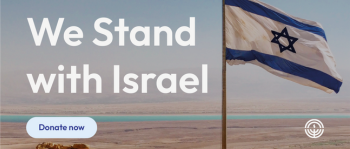Some of the key opportunities for the greater Kansas City Jewish community moving forward involve more outreach to interfaith families, getting beyond the “high-density suburbs” with programs and other offerings, and ensuring access for all types of individuals–including virtual access, according to Dr. Matthew Boxer, principal researcher for the 2021 Greater Kansas City Jewish Community Study.
The study was conducted by the Cohen Center for Modern Jewish Studies/Steinhardt Social Research Institute at Brandeis University in partnership with NORC at the University of Chicago between April and July 2021.
“You’re going to need to do more to reach out to interfaith families,” Boxer said. “Doing more to reach out to interfaith families could have a lot to do with the growth and vitality of your community in the future.”
Boxer’s words about interfaith families are echoed in Chapter 11 of the community study report, which focuses on “conclusions and recommendations.” It is noted in this chapter that “Almost no interfaith families in Greater Kansas City feel very connected to the local Jewish community or to any online Jewish community,” and the authors go on to suggest that certain desired outcomes would require “a strong investment in efforts to attract interfaith families to communal programs and events, and clear communication that these families are a valued part of the Jewish community.”
The Greater Kansas City Jewish Community Study–the first comprehensive population and demographic study of the local Jewish community in more than 35 years–was commissioned by Jewish Federation of Greater Kansas City in order to provide the community with key data and insights for strategic planning and to inform decision-making around use of community resources. There were 989 respondent households.
In addition to the opportunities mentioned above, the study answers a variety of questions relevant to the present and future of the Kansas City Jewish community, including: How large is the community? Where does the Jewish population live? How many Jews live in poverty or have unmet financial needs? How many people in the community live with disabilities?
The answers to these questions are available in the published report, available at www.jewishkansascity.org/communitystudy.
Also in the report is more detail about the opportunities Boxer mentioned. For example, to Boxer’s comment during a presentation to the Federation board that “You still have to think a little bit about expanding your capacity, particularly in the city,” the report’s “conclusions and recommendations'' chapter goes on to say, “The majority of Jewish institutions in Greater Kansas City are still in the High-Density Suburbs [Leawood, Overland Park and Prairie Village], but Jewish [programmatic] infrastructure is growing in the City region. To maintain the growth in this region, the community must continue to invest in expanding its programs and services in the city. But the community must also consider how to improve services in underserved neighborhoods that have traditionally not been home to large numbers of Jewish households.”
The above recommendation also points to ensuring access. “Roughly one in four households include somebody who is limited [in their activities by some sort of health issue, special need or disability],” Boxer said.
He also noted that COVID-19 was “still a big barrier to participation, and it’s going to continue to be so until the pandemic comes to an end. There’s no question it’s been disruptive.” He suggested the community make sure to maintain high-quality offerings for people at high risk, for whom virtual programming may be the only viable option for a while longer.
Other insights from Boxer, drawing from the data, include the greater Kansas City Jewish community having “a substantial number of young families, and more children than you used to have,” and having an opportunity to engage more Jewish adults in Jewish organizations and programming.
“We’re very excited about the study and to have this new data,” said Helene Lotman, Jewish Federation’s president and CEO. “It will help Federation and our community institutions plan for the future, both independently and collaboratively, so we can all better meet the current and future needs of our community.”
One thing that differentiates Jewish community studies done by Brandeis University’s team is an Index of Jewish Engagement, focusing on Jewish behaviors and categorizing Jews in a particular metropolitan area–in this case, Kansas City–into five distinct engagement groups. In Kansas City, these groups are Cultural, Personal, Affiliated, Connected and Immersed, with the behaviors of each group looking different from the others, at least in some areas.
Engagement groups include people of all ages and of all denominational identities; the Index identifies opportunities to improve communal planning based on people’s varying
needs and interests. For example, the Cultural and Personal engagement groups encompass 54% of Jewish adults in greater Kansas City, and these people have little to no current interaction with Jewish organizations.



